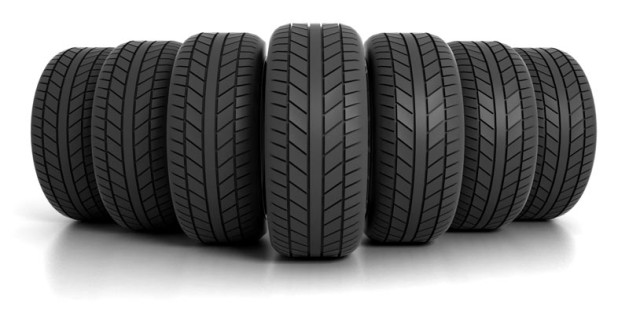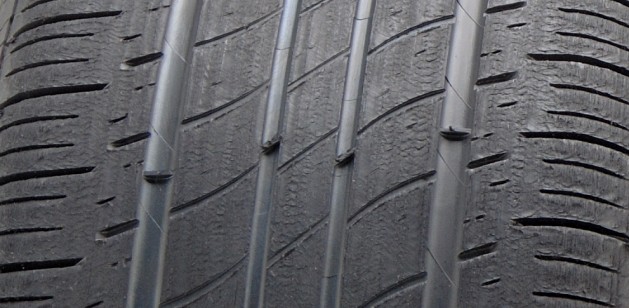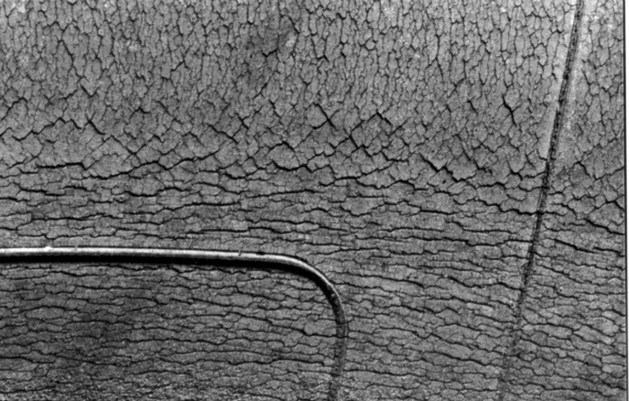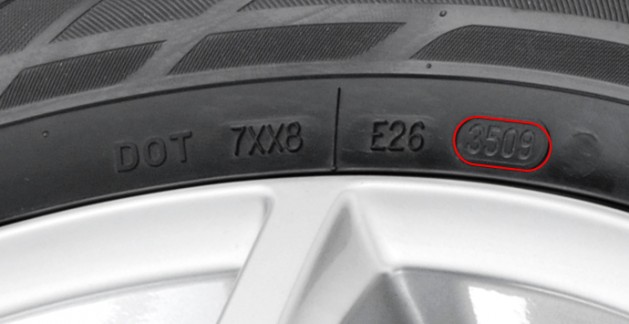How To Find Out If You Need New Tires In Less Than 2 Minutes

Tire Wear Bars
A tire is considered worn out when tread depth reaches 2/32 of an inch. Unless you are a mechanic, you probably don’t own a tread depth gauge to take this measurement. The good news is there are plenty of other ways to accurately measure tire tread depth. Every tire has built-in tread wear bars. These bars are molded into the tire at the bottom of the deepest tire grooves. They are almost completely unnoticeable until the tire has reached the end of its life 2/32nds of tread depth. The tread wear bars make themselves visible by bridging the tire grooves forming a solid line across the tread grooves. If the tread wear bars are hitting the road surface, it’s time for new tires.

The Spare Change Trick
Impress your friends by using your spare change as a makeshift tread depth gauge. When flipped upside down, the distance from the edge of the coin to the top of icon noted below gauges how much tread depth you have left. To check if a tire is worn, you simply put the edge of the coin into the tread grooves of your tires. A tire with enough tread will cover the top of the icon.
Penny heads Lincoln’s head 2/32nd of an inch Worn Out
Quarter Washington’s head 4/32nd of an inch Minimum Wet Depth
Penny tails Lincoln Memorial 6/32nd of an inch Minimum Snow Depth
Not All Punctures Are Equal
A small puncture, say from a nail, in the tread area can be safely and properly repaired by a professional. Of course, if you have something like a bolt hanging out of your tire, it will likely need to be replaced. Punctures in the sidewall of a tire cannot be repaired. If this happens to you, replace with a new tire immediately.
Checking For Dry Rot
Tires typically have a service life of about six years. The rubber and structure inside the tires can break down over time, and the most common visible aging sign of tires is aging cracks. These little cracks form in the rubber of the tread or sidewall. Check for these marks if you have older tires. Cracked or checking tires should be replaced immediately.

Checking How Old Your Tires Are
If you have no idea how old your tires are, there is an easy way to tell. Every tire made after 2000 has a four-digit DOT date code stamped into the tire sidewall. The last two numbers at the end of the DOT code represent the year in which the tire was made. The two numbers preceding these designate the week. For example, a tire with a DOT code ending in 0310 was manufactured in the third week of 2010.

For more tire tips, tests, tech and other info, check out TireRack.com. Tire Rack has been revolutionizing tire buying since 1979. With over 2.2 million square feet of warehouse space across the U.S., packed with 21 major tire and 52 wheel brands, Tire Rack can quickly deliver directly to your door or to one of more than 8,000 trusted independent recommended installers.
Check out the video below for even more great info from Tire Rack.



